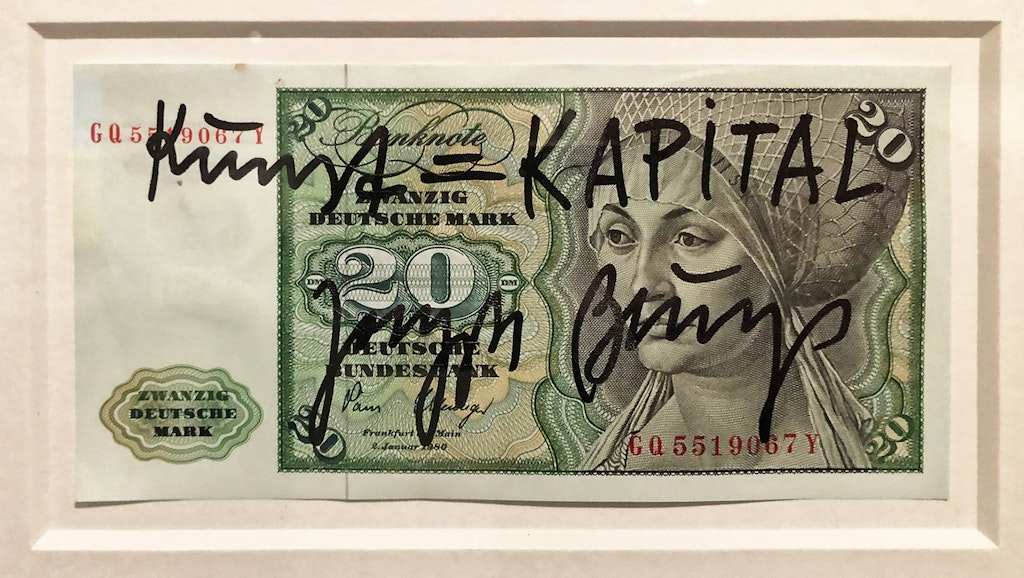Dress sense
The average rock band from the 1980s onwards dressed as if they were going to fix your car, not blow your mind
This article is taken from the January/February 2021 issue of The Critic. To get the full magazine why not subscribe? Right now we’re offering three issue for just £5.
Sometimes I wonder if everyone’s heart is really in the culture war. When America’s top contrarian, Candace Owens, saw singer Harry Styles wearing an elegant cornflower-blue lace Gucci dress on Vogue’s December cover, surely even she felt a wave of tiredness at the inevitability of what she was about to do.
And yet, relentless as gravity, the logic of the discourse compelled her to hit the tweet button and say her piece: “The steady feminisation of our men at the same time that Marxism is being taught to our children is not a coincidence,” she fumed. “Bring back manly men.”
There’s a lot to enjoy about Owens’s attack, including but not limited to the idea that Marxist twenty-first-century style would show up in several thousand pounds-worth of smocking. It’s a gorgeous gown, but it’s not exactly prole-wear.
If you want to see some manly men, in fact, I recommend a short tour of vintage Soviet labour propaganda posters, which you will find are simply bulging with powerful muscles straining at the fabric of sober workwear. Phwoar, check out the quotas on him.
As the west was winning the Cold War, pop music was offering a very different version of masculinity to the Moscow ideal. The Seventies were all about glam — a genre which, frankly, makes Styles’s efforts look like something you’d see on a footballer.
Glam was about boys crashing out of their gender confines and into the glorious, pouting world of the feminine
Actually, scratch that, because even the footballers were dangerously girly by current standards, with their luscious shoulder-length hair and honed pecs peeking out from singlets. Which meant the pop stars had so much further to go if they wanted to make an impression.
In Shock and Awe – his chronicle of glam — the critic Simon Reynolds puts it like this: “If the Sixties were about the White Negro, Bowie was guessing — gambling — that the defining crossover of the Seventies might be the Straight Gay.”
Rock’n’roll was invented when white musicians crossed the colour bar to raid rhythm and blues; glam was about boys crashing out of their gender confines and into the glorious, pouting world of the feminine. And if there’s a greater tribute to capitalist individualism than David Bowie dragged up as three different backing singers in the “Boys Keep Swinging” video, I haven’t seen it.
Bowie, obviously, was playing along the frightening, thrilling edge of androgyny. So were Roxy Music — a riot of animal prints, lurex and trousers so punishingly tight that they crossed the line from “sexually ambiguous” to “oof, definitely a bloke”. Both made music with a sheen of sleaze, and the way their look blurred man into woman was an intimation of the blurring of bodies that happens in sex.
Bowie’s bisexuality notwithstanding, sometimes genderbending can be hot in a surprisingly straight way: think of Prince’s “If I Was Your Girlfriend”, in which the narrator fantasies about swapping sex so he can get closer to his girlfriend.
And if there was something ultimately quite straight about some of glam’s practitioners, sex seemed barely in the picture at all with others: Dave Hill wore some astonishing high-heeled boots, but I defy anyone to think of listening to Slade as an erotic experience.
The bespangled splendour of glam didn’t necessarily imply a radical attack on the sexual order. Part of it was just boys being boys, showing off on stage. After all, female stars, give or take a Suzi Quatro. In other words, being a manly man in the 1970s was quite compatible with wigs and skin-tight leather. There’s a sad irony in the fact that glam made a space for sexual exploration — any number of middle-aged gay men will tell you how Bowie on Top of the Pops was their awakening — and then the increased public awareness of homosexuality, and the more explicit homophobia that came with it, created a backlash against men being dazzling.
The average rock band from the 1980s onwards dressed as if they were going to fix your car, not blow your mind.
It’s that shift which means Harry Styles in a dress can be taken as not simply flirtatious and playful, but somehow radical. It’s not just conservatives like Candace Owens who take that line, either.
From the other side, there were glowing hymns to Styles for “breaking down the gender binary”, followed by corollary angsting about whether everyone (per style website Dazed) was too keen to praise a “handsome, rich, cis-gendered white man” for doing something that “trans femmes of colour started”.

Leave aside the horrifying Slade-erasure contained in that statement, and ask instead why so many people want a beautiful man in a beautiful frock to mean so much. Styles (whose album Fine Line is, incidentally, heady with Seventies pop vibes) answered Owens in the best imaginable way: by not taking her seriously, and instead posting a picture of himself eating a banana, with the caption “bring back manly men”.
Manly male pop stars have been wearing dresses for decades, not because they’re revolutionaries, but because they know how much fun it is.
Enjoying The Critic online? It's even better in print
Try five issues of Britain’s most civilised magazine for £10
Subscribe














